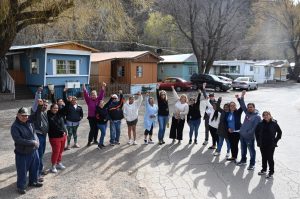Practitioner Voice
Shelterforce has always been driven by the voices of the people in the housing field. Practitioner voice pieces are neither reported journalism nor standard opinion pieces, but articles that share knowledge, insight, or examples from people who work or research in the field.
The Latest

Supreme Court Considers Landlord Appeal That Could Overturn Tenant Protections
A legal case claiming that COVID-era eviction moratoriums were unconstitutional could spell trouble for tenant protections
Search & Filter Within this Topic
filter by Content Type
filter by Date Range
search by Keyword

In the Rush to Build, Existing Affordable Housing Is Falling Apart
With attention—and funding—focused on new housing supply over preservation and operations, even mission-driven nonprofit affordable housing managers are struggling to maintain decent conditions in older affordable housing.

What Do Residents Think of Community Development Organizations?
Research explores residents’ experiences with and observations about community development organizations in four cities.

What the Grants Pass Case Means—For All of Us
In an era of runaway housing costs, the Supreme Court is going to decide whether it’s illegal to not be able to afford them.

Why Combining Community Land Trusts and Limited-Equity Cooperatives Benefits Residents
A church with a shrinking congregation sold its land to SquareOne Villages to develop the Peace Village Co-op, a 70-unit housing development that’s both a community land trust and limited-equity co-op. How does combining these shared-equity homeownership models work?

Let’s Harness the Growth of the Shared-Equity Field
Between 2011 and 2022, the number of nonprofits with shared-equity programs and CLTs increased by 30 percent. Here’s a look at the diversity of their programs and portfolios, and who’s benefiting from their rise.

Low-Income Residents of Inclusionary Housing Report Facing More Bias
A survey of Cambridge, Massachusetts, residents found that residents of affordable units in inclusionary housing properties reported frequently experiencing bias, especially from management. Here’s how we can change that.

How the New CRA Rule Will Help, and Where It Falls Short
The assessments that evaluate a bank’s lending practices have improved, but there are several missed opportunities for reform. For one, the new rules won’t incorporate a racial analysis into lending examinations.

What’s Driving Homelessness? It’s Not Immigration and It’s Not Opioids.
Homelessness rose by 12 percent between 2022 and 2023. Blaming drug use and immigration for the increase distracts us from the real causes.

Can Residents Get More Out of Tax Credit Housing?
Arrangements in which LIHTC tenants share in the development’s financial benefits, or become partial or full owners, are rare—but some properties have pulled them off. This scan of several examples shows the possibilities—and the conditions needed for them to succeed.

Memphis Is Shrinking. Here’s Why We Need to Change That
Memphis is struggling with a dwindling population, driven in part by a high crime rate and disinvestment in low-income areas of the city. What are local organizations doing to turn this around?

Rebuilding After Trauma: Public Spaces in Cleveland
Traumatic events, and the ongoing traumas of vacancy and disinvestment, can be strongly associated with the places where they occurred. In Cleveland, several organizations are bringing new function and meaning to traumatized spaces.

Let’s Act Now to Stop Racism in Real Estate Appraisals
In 2022, a government task force released an action plan about combating bias in the appraisal industry. How can CDFIs fight back against the damage caused by under-appraisals?
